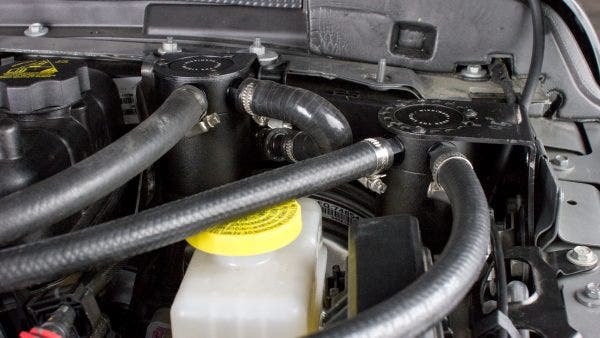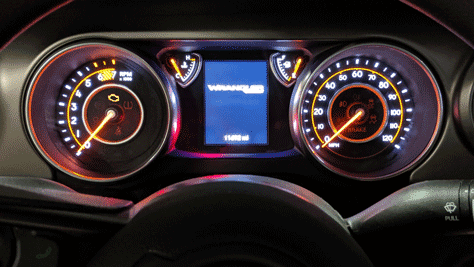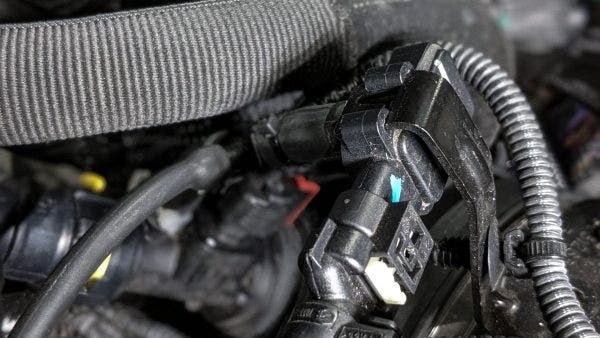
Everyday Exploration - Oil Catch Can Kit, Part 3: Test results
What's exploration without a challenge? If you drive the same easy trails or climb the same easy routes over and over again, life becomes boring. The thrill of exploration often hinges on the prospect of the unknown and taking a path without knowing where it will lead you. Without the challenge of the unknown, exploration is just following a map.
When we last saw our 2018+ Jeep Wrangler 2.0L catch can kit, we were still firmly in familiar territory. We installed two catch cans on the Jeep, one for the PCV side of the system and one for the CCV side. These two kits would serve as our proof of concept for each side of the system. At the end of our 1,000-mile test, we'd check the catch cans and see if we needed to build a kit for the CCV side, PCV side, or both. Before we could rack up 1,000 miles, however, an old familiar friend greeted us: the check-engine light (CEL).

The unknown at the start of this project was not whether our catch cans would collect enough blow-by, but rather if we could do so without upsetting the pressure sensor on the CCV side. Crankcase pressure sensors like this are not unfamiliar to us (we saw a similar setup on the 2015+ F-150 3.5L EcoBoost), but each manufacturer has its own parameters and it seems that every sensor we encounter is more sensitive than the previous.

The code that the ECU gave us was "crankcase hose disconnected". That meant the pressure at the sensor was lower than the ECU expected and our CCV side prototype was too restrictive. The inner-diameter of our proof-of-concept lines were the same as the original lines, so the restriction was likely due to the length of the lines, or the internal features of the catch can. Before we took the time to troubleshoot the CEL, however, we wanted to make sure the CCV side was catching blow-by. So, we cleared the CEL and finished up our 1,000-mile test.

Unscrewing each catch can after the 1,000-mile test revealed that the PCV side did not catch any blow-by, while the CCV side caught 30ml of water, fuel, and oil. We weren't surprised that the PCV side didn't collect any blow-by. The PCV valve is closed when the intake is under boost, which kicks in just after the electric motor shuts off. With a small turbo that's almost constantly making boost, the PCV side of the system is only operational at idle and light cruising. The PCV side also has its own oil separation system that recirculates the collected blow-by into the oil pan and does a good job of keeping oil out of the intake.

All of this means that we'll be making a CCV-only kit. While it's going to be a tedious task to appease the crankcase pressure sensor, we're excited to devote all our attention to the CCV side and do a little exploration of our own to protect the JL Hurricane. In the next post, you'll see how we solved our CEL issue and how much blow-by our final CCV-side kit collected. We'll also have a special sale announcement, so keep an eye out and, as always, let us know what you think!




